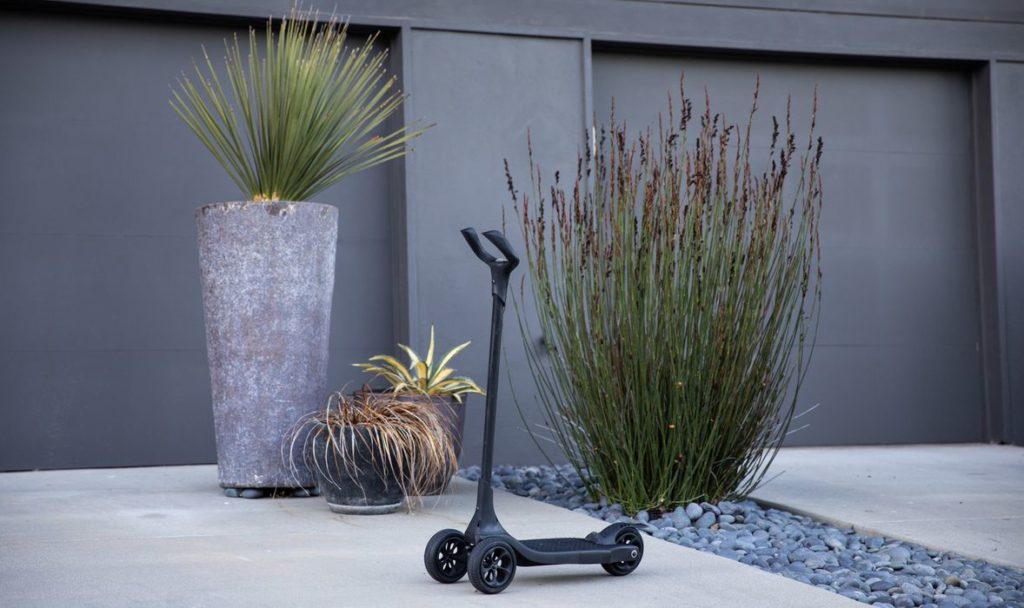
Stratasys made a bundle of announcements this week, mostly regarding materials, but also a very key partnership.
SAF Materials
One of the new materials announced are for the H350, the company’s SAF device. SAF is their latest 3D printing process, “Selective Absorption Fusion”. SAF is a powder-bed process, but unlike most other powder processes, does not use a laser or pin-point energy source to fuse the particles. Instead SAF seems to use a special fluid, applied by roller to the entire print bed. This fluid then absorbs radiated heat, causing the “wet” portions of the bed to fuse. This rolling process repeats layer-by-layer, gradually building an object.
The main advantage of SAF is speed; the roller is much faster than waiting for a laser to laboriously trace all portions of an object. This is particularly evident on full-bed print jobs. In other words, SAF is ideal for production applications where high throughput is required.
The new materials for the H350 are PA11, which will be the initial material for the H350, and PA12, which will follow on in 2022.
Both of these materials are widely used for production of end-use parts, and thus this will certainly make the H350 more attractive to manufacturers.
Origin Materials
Stratasys acquired Origin late last year. The Origin “P3” technology is a resin process, and is capable of delivering parts with surface quality equivalent to injection molding. It’s able to do this because P3’s DLP process includes extreme use of sensors and real-time feedback to control the build process with great precision.
Stratasys announced a deal with Henkel to provide two new Locktite materials for the Origin equipment.
One is Dura56, which is a durable, low-cost polymer with great impact resistance. The other Loctite material is IND405, which is a transparent material. While it can be 3D printed on P3 equipment with very smooth surfaces, it’s also possible to polish IND405 prints to be optically clear. This opens the possibility of 3D printing lenses and other optical parts.
Stratasys also announced a new open materials mode for Origin 3D printers. The “Open Materials License” is a toolkit operators can use to test unusual resins by overriding default print settings. This license is targeted for advanced operators that have the skills to tweak settings to obtain unusual results.
Stratasys MES
Finally, the biggest announcement of the day from Stratasys in my opinion is a partnership with AMFG.
AMFG is a London-based service providing a Manufacturing Execution System. An MES will manage orders, prepare print jobs, schedule and dispatch prints, record analytics and much more. Basically, an MES does the workflow necessary to operate a fleet of 3D printers — or other manufacturing devices.
Stratasys said AMFG is partnering with them to:
“Deliver advanced AM solutions that combine AMFG’s workflow automation expertise with Stratasys’ 3D printers and GrabCAD software. AMFGs software solution enables connectivity across the production workflow, streamline processes, and provide greater levels of traceability and visibility. Further, the combination of Stratasys 3D printing solutions with AMFG’s fully automated order management, routing and production scheduling tools enable fully automated end-part production at scale.”
This is a very important move, because it allows Stratasys’ current and future production equipment to more seamlessly be integrated into Industry 4.0 environments. It has long been a goal for Stratasys to move from the prototyping world into the much larger manufacturing sector, and this arrangement could be a foundational piece for doing so.
Secondly, their main competitor, 3D Systems, just announced they’ve acquired Oqton, a powerful MES for their own use. Is it a coincidence that Stratasys announced this partnership only days after 3D Systems’ announcement?
